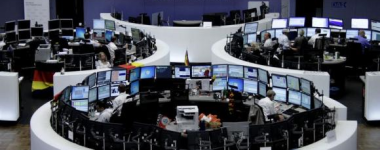Global monetary policy last week was dominated by the Federal Reserve’s message that the post-crises era of quantitative easing will end in November when it buys a final batch of U.S. Treasuries and housing market debt, shutting off one of the major spigots of global liquidity. Minutes of the June 17-18 meeting by the Federal Open Market Committee (FOMC), the Fed’s policy making body, showed that “participants generally agreed” that the Fed’s asset purchase program would be completed with the purchase of $15 billion of assets following the FOMC meeting on Oct. 29 if the economy improves as expected.

News of the Fed’s decision to wrap up its third program of quantitative easing, known as QE3, was greeted with a “so what” shrug by financial markets, a welcome contrast to May 2013 when news that the Fed could “take a step down” in its asset purchases in the next few meetings rattled markets and triggered a major reversal of global capital flows away from emerging markets. The lack of market volatility in response to the FOMC’s message illustrated the benefit of transparent and consistent communication.
From now on, the focus is squarely on when the Fed will start raising rates – in the minutes described as “the liftoff of the federal funds rate” – with every new release of unemployment and inflation rates likely to spark feverish speculation and market volatility.
The minutes showed how the FOMC is going to great lengths to ensure that it keeps up this track record of transparency, with policy makers debating the nitty-gritty of monetary policy post-QE. This includes how the Fed should communicate while it still has a very large balance sheet and how its tools – interest on excess reserves (IOER) and overnight repurchase agreements (ON RRP) – will work in conjunction with the tried and true federal funds rate to control short-term rates.
But while the FOMC minutes hardly caused a stir, European and then global markets were rattled by trouble at Portugal’s biggest listed bank, Banco Espirito Santo, and its controlling shareholder.

